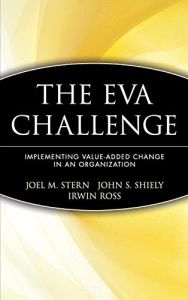Join getAbstract to access the summary!

Join getAbstract to access the summary!
Joel M. Stern, John S. Shiely and Irwin Ross
The EVA Challenge
Implementing Value-Added Change in an Organization
Wiley, 2001
What's inside?
Get your managers and shareholders aligned for value.
Recommendation
Authors Joel Stern and John Shiely advocate a total revolution in the way companies are valued and measured. They make a convincing case for using EVA ("Economic Value Added") as the primary measure of corporate performance. The authors argue that the SEC’s yardstick for corporate reporting, the "Generally Accepted Accounting Procedures" (GAAP), was designed to protect lenders by depicting a company’s liquidation value. As such, GAAP provides an overly conservative and only marginally accurate picture of financial health. EVA principles - at least according to the consultants who advise companies on using them - evaluate intangible assets more realistically and correspond more closely to stock market performance. getAbstract.com recommends this book to executives who seek improved corporate financial and market performance, and to investors interested in understanding how value is created and maintained.
Summary
About the Authors
Joel M. Stern , managing partner of Stern Stewart & Co., is a widely published writer and the financial policy columnist for the Sunday Times of London. He serves on the faculties of five graduate business schools worldwide. John S. Shiely, president of Briggs & Stratton, was a tax accountant with Arthur Anderson before he became a lawyer. He joined Briggs & Stratton as general counsel in 1986. Writer Irwin Ross (whom Stern retained to help write this book) was a roving editor for Reader’s Digest. He has written for many magazines, including Fortune and Harper’s, and is a regular contributor to EVAngelist. He has written a number of books, including The Loneliest Campaign, The Image Merchants and Shady Business.

















Comment on this summary